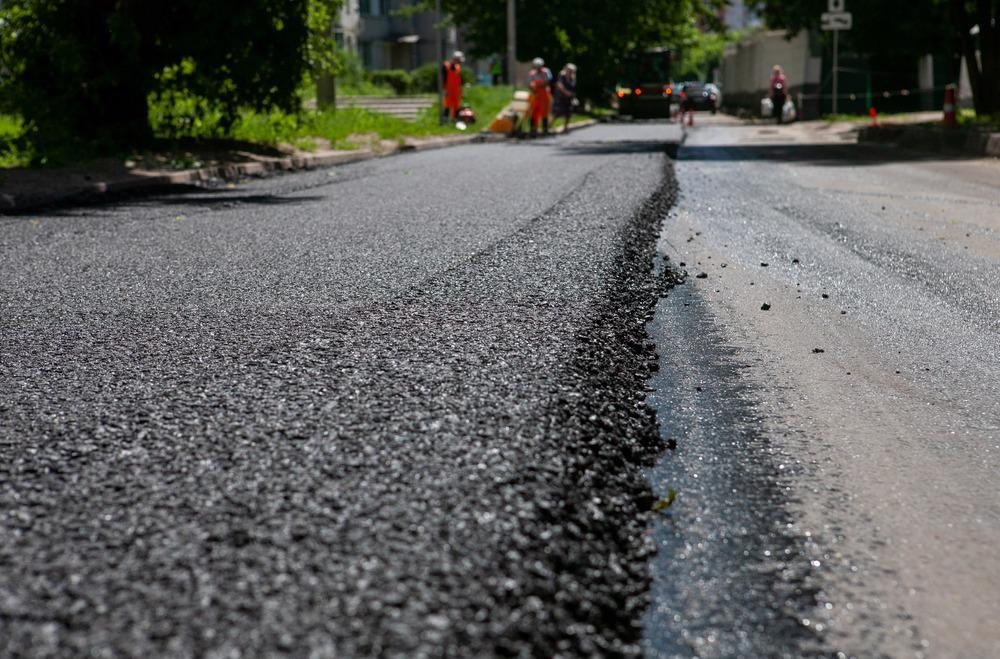In this article, the effects of adding different nanomaterials on asphalt cement/binder (AC/AB) rheology are discussed.

Image Credit: Ksenia Soboleva/Shutterstock.com
Limitations of AC
AC is typically obtained as a residue from the crude oil refining process or natural sources. It has a semi-solid or solid consistency at ambient temperatures and is used as an aggregate binding material for paving roads.
However, temperature susceptibility is the major limitation of using AC in the construction of roads as the material takes a liquid form at high temperatures, leading to asphalt rutting, and becomes brittle at low temperatures, leading to low temperature cracking.
Role of Nanomaterials to Improve the Rheological Properties of AC
Modifying AC using different nanomaterials can reduce the temperature susceptibility of the material and improve its rheology, leading to higher stability and durability of asphalt mixtures.
Nanomaterials have been shown to alter the AC rheological and physical properties, such as increasing softening point (SP), aging resistance, rutting and low-temperature cracking resistance, and viscosity, and decreasing the penetration value and ductility.
SP and viscosity of the AC were increased while the ductility decreased when organ-modified montmorillonite and montmorillonite were added to AC separately. These modifiers also increased the complex modulus and rutting resistance and reduced the phase angle.
Similarly, the addition of nano clay (NC) and macro clay to the AC increased the SP, tensile strength, and kinematics viscosity and decreased in penetration value of the resultant modified AC (MAC).
The penetration value and ductility decreased, while the aging resistance and SP increased when a low percentage of NC was added to AC. The addition of Cloisite-15A NC type to AC significantly improved the rutting performance of the MAC.
MAC obtained after the modification of AC with organically expanded vermiculite (OEVMT) compounds and nano zinc oxide (NZnO) demonstrated an improved photo-oxidation and thermal-oxidation aging resistance, lower complex modulus, and higher phase angle.
Recent Studies Investigating the Effect of Nanomaterials on AC Rheology
In a recent study published in the Journal of King Saud University – Engineering Sciences, researchers added NZnO and NC separately to AC and investigated the effects of these modifiers on the rheological properties of AC.
Researchers added 12%, 10%, and 8% NC modifiers and 3%, 2%, and 1% NZnO modifiers to the AC and performed a comparative analysis. The optimal percentage of each modifier that can yield the best results was also determined.
60/70 penetration grade AC, surface-modified NC with 25-30% of octadecylamine montmorillonite clay and a particle size of 20 µm, and 20-30 nm NZnO particles were used for the study.
The fire and flash points, penetration values, and SP of the MAC were reduced by adding either NZnO or NC to the AC. The complex shear modulus values increased when the AC was modified with NZnO or NC, indicating a higher stiffness in the MAC.
The MAC displayed a lower phase angle than the AC, indicating less viscosity and more elasticity. The rutting resistance of AC increased upon modification with either NZnO or NC. Moreover, increasing the concentration of either modifier in the AC led to a corresponding increase in rutting resistance.
Both modifiers reduced the fatigue factor values of AC, leading to an improvement in fatigue resistance. The MAC demonstrated a higher m-value and creep stiffness, indicating significant improvements in the low-temperature performance of AC after the addition of either modifier.
3% NZnO and 10% NC were the optimal concentrations of modifiers that led to the highest improvement in rheological properties. 10% NZnO was considered the optimal concentration due to higher workability and lower costs than the other two concentrations, while 3% NZnO demonstrated the best improvements for different temperatures.
In another study published in the MDPI journal Nanomaterials, researchers used high-quality, low-cost graphene to prepare conductive graphene-modified asphalt (GMA) binders with 10%, 8%, 6%, 4%, 2%, and 0% of graphene and investigated their rheological properties.
The findings of this study demonstrated that the rutting resistance at higher temperatures, strength, and elasticity at above ambient temperatures were improved in the GMA binders.
The percolation of GMAs and the formation of graphene networks occurred above 8% graphene concentration, which indicated the feasibility of using GMA binders with more than 8% graphene concentration to prepare conductive asphalt concrete.
The GMA modification mechanisms differed after and before the percolation point. Before the percolation, graphene with a molecular structure similar to asphaltene enhanced asphalt by increasing the asphaltene components. After the percolation, the formation of a graphene network enhanced the asphalt.
The differences in moduli between the GMA binders and the ABs were more significant at higher temperatures compared to lower temperatures. The graphene modification effect on asphalt was therefore indicated to be superior at higher temperatures compared to lower temperatures as the temperature susceptibility of graphene is considerably lower than asphalt.
The addition of graphene improved the viscosity of all GMA samples, and the viscosity increased with the increasing concentration of graphene. The addition of graphene also increased the compaction temperature and mixing temperature of the modified asphalt samples.
To summarize, adding different nanomaterials, such as NC, NZnO, or graphene, to AC/AB can significantly improve their rheological properties. However, more research is required to investigate the rheological properties of asphalt mixtures when they are modified using several nanomaterials, such as NZnO and NC.
References and Further Reading
Yang, L., Zhou, D., Kang, Y. (2020). Rheological Properties of Graphene Modified Asphalt Binders. Nanomaterials, 10(11), 2197. https://doi.org/10.3390/nano10112197
Khafaja, D. A., Imam, R., Taamneh, M., Al-Omari, A., Al-Mistarehi, B. (2021). The effects of adding Nano Clay and Nano Zinc Oxide on asphalt cement rheology. Journal of King Saud University – Engineering Sciences. https://doi.org/10.1016/j.jksues.2021.03.010.
Disclaimer: The views expressed here are those of the author expressed in their private capacity and do not necessarily represent the views of AZoM.com Limited T/A AZoNetwork the owner and operator of this website. This disclaimer forms part of the Terms and conditions of use of this website.